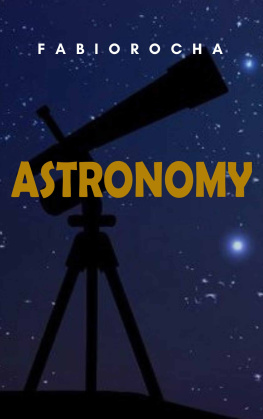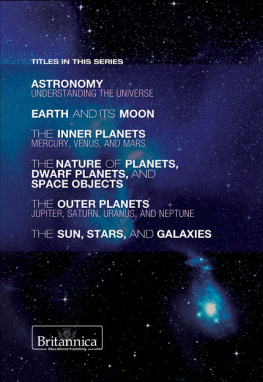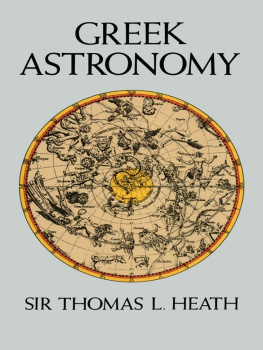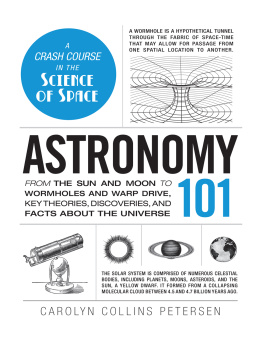Kevin Marvel - Astronomy Made Simple
Here you can read online Kevin Marvel - Astronomy Made Simple full text of the book (entire story) in english for free. Download pdf and epub, get meaning, cover and reviews about this ebook. year: 2005, publisher: Broadway Books, genre: Children. Description of the work, (preface) as well as reviews are available. Best literature library LitArk.com created for fans of good reading and offers a wide selection of genres:
Romance novel
Science fiction
Adventure
Detective
Science
History
Home and family
Prose
Art
Politics
Computer
Non-fiction
Religion
Business
Children
Humor
Choose a favorite category and find really read worthwhile books. Enjoy immersion in the world of imagination, feel the emotions of the characters or learn something new for yourself, make an fascinating discovery.

- Book:Astronomy Made Simple
- Author:
- Publisher:Broadway Books
- Genre:
- Year:2005
- Rating:5 / 5
- Favourites:Add to favourites
- Your mark:
- 100
- 1
- 2
- 3
- 4
- 5
Astronomy Made Simple: summary, description and annotation
We offer to read an annotation, description, summary or preface (depends on what the author of the book "Astronomy Made Simple" wrote himself). If you haven't found the necessary information about the book — write in the comments, we will try to find it.
Astronomy Made Simple — read online for free the complete book (whole text) full work
Below is the text of the book, divided by pages. System saving the place of the last page read, allows you to conveniently read the book "Astronomy Made Simple" online for free, without having to search again every time where you left off. Put a bookmark, and you can go to the page where you finished reading at any time.
Font size:
Interval:
Bookmark:


As this book was nearing completion, a close and personal friend passed away after a brave fight against a rare form of cancer. Dr. Janet Akyz Mattei, the longtime director of the American Association of Variable Star Observers, died on March 22, 2004. She represented the best in astronomy and the best of humanity. A tireless advocate for variable star observing, she managed to connect professional astronomers with eager and talented amateur astronomers to build something larger than both groups. She was a longtime friend and colleague, and I dedicate this book to her because she always tried to make astronomy simple.
Direction
Chapter 7: The Terrestrial Planets
Chapter 9: The Fringes of the Solar System
Chapter 13: The Life and Death of Stars
Reflecting Telescopes
Astronomy is arguably the oldest science. Since ancient times, people have looked up and wondered about the stars, planets, and other celestial phenomena. Although the true scientific study of the heavens has been with us only a few hundred years, in that time we have learned much about the objects in the sky and even learned the origin and ultimate fate of our universe.
Astronomy is fundamentally the study of everything we see in space: the Sun, the Moon, other planets in our solar system, stars, planets around those stars, our Milky Way Galaxy, other galaxies, and even the whole universe itself. For most of these objects, the only way we can learn about them is from the light they give off or reflect. Luckily for astronomers, light carries much information about the object and about the space between the object and us here on Earth.
Astronomers have two basic activities. They seek to map the heavens, to produce a complete inventory of our Universe, and they seek to understand how objects in the universe, and even the whole universe itself, change over time. Astronomers refer to this as the study of the evolution of objects (though they are not referring to the theory of evolution developed by English naturalist Charles Darwin). Evolution in an astronomical context simply means how something changes over time.
Nothing in human culture is shared and appreciated by as many people as the night sky and the objects it contains. Whether you are in the United States (even in our largest cities), the Serengeti Plains of Africa, the Gobi Desert of central Asia, or on a boat in the middle of the Pacific Ocean, the night sky can be seen, studied, and enjoyed.
Before electricity, early peoples used the night sky as inspiration for their stories and passed those stories along to their children. The night sky is at the heart of the legends and myths of many cultures. What draws civilizations to the sky is no doubt its majesty. When you go to a dark location, away from the glare of city lights, and look up at the sky, you can lose yourself in its beauty. A myriad of stars twinkle above you. A few bright planets are perhaps visible, along with their distinctive colorsred for Mars, yellow for Jupiter. You may see a meteor leave a bright trail as it blazes into our atmosphere. Even manufactured objects such as the International Space Station, Space Shuttle, or low-orbit satellites can add to the nightly performance.
In our entertainment age, fewer and fewer people go outside simply to enjoy the night sky. This is a tragic loss. The heavens above are the one universal art. We should all make time to understand and enjoy this dramatic canvas. It is hoped this book will help you gain a deeper appreciation of those twinkling lights overhead.
Astronomers are still working hard to understand the details of our universe, but they already have a good understanding of many things.
We know that Earth is a sphere that spins on an axis and orbits the Sun. Earth is a member of a solar system of nine planets and the Sun. The planets are also spherical bodiessome made of rock, some of gassesthat also spin on their axes and are in orbit around the Sun. Some planets have moons like our Moon, but smaller. Lots of smaller objects, such as comets, asteroids, small rocks and even sand-like dust grains, also orbit the sun.
Our solar system is a small part of a very much larger system of stars, gas, and dust called the Milky Way, or sometimes simply the Galaxy. Billions of galaxies (systems of stars like our Galaxy) exist in the universe, the Milky Way being just one, and kind of an average one at that.
Astronomers know that distant matter is the same as matter here on Earth, and chemical elements such as hydrogen, oxygen, and iron appear to be the basic building blocks of the whole universe. Surprisingly, the rules, or physical laws, that govern how matter interacts work the same everywhere in the universe. Gravity works on the same principle on Earth as it does on the Moon or at any other spot in the universe. This is fortunate for all of us that wish to study the stars, because it simplifies things considerably.
Those tiny, bright points of light we see in the skythe starsare really extremely large and hot balls of hydrogen and helium gas. They give off light because nuclear reactions take place deep in their interiors, giving off energy that makes its way to the surface in the form of light. They exist for finite lengths of time, slowly changing as they age. They initially form out of dust and gas, usually in clusters or groups known as stellar nurseries. Also, we now know that planets exist around other stars, although we have no direct image of them yet.
So why should anyone bother trying to understand astronomy? Just looking up at the sky is interesting enough, right?
Long ago, people enjoyed finding patterns, such as lions, bears, and hunters, in the alignments of the stars. They then made up stories about these constellations, or patterns of stars in the sky. As different constellations became visible during the year, different stories could be told. This is perhaps the simplest way to enjoy and understand the sky.
But this book will try to teach you a bit more about what you might see in the sky. Seeing Mars as a bright red dot in the sky might brighten your night, but knowing that this red dot is a whole planet like Earth with its own ice caps, dust storms, sand dunes, and the largest volcano and the largest canyon system in the whole solar system would probably enhance the experience. Knowing that Mars has a thin atmosphere composed almost entirely of carbon dioxide and that there is likely water just below the surface in the form of ice could make Mars seem a bit more interesting and exotic than a simple red spot in the sky.
If you are curious about astronomy and want to understand more or if you are taking an astronomy class in school and hope to understand things more completely, this book will clearly explain the fundamentals of astronomy and enhance your enjoyment of the night sky.
This book begins by exploring some of the basic facts concerning how the universe works before moving on to the specific contents of the universe and their interactions.
Font size:
Interval:
Bookmark:
Similar books «Astronomy Made Simple»
Look at similar books to Astronomy Made Simple. We have selected literature similar in name and meaning in the hope of providing readers with more options to find new, interesting, not yet read works.
Discussion, reviews of the book Astronomy Made Simple and just readers' own opinions. Leave your comments, write what you think about the work, its meaning or the main characters. Specify what exactly you liked and what you didn't like, and why you think so.








